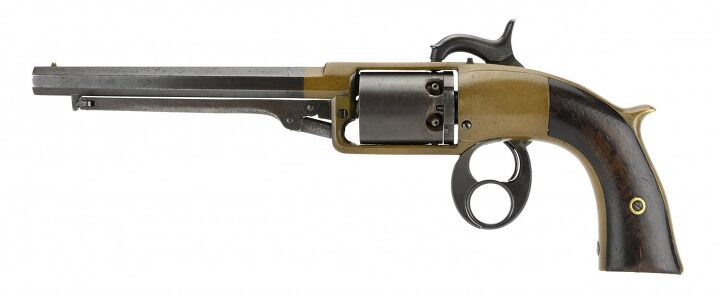Prior to the Civil War, firearms inventors were attempting various mechanisms and designs in order to enable revolvers to be fired faster without breaking the firing grip. One of these designs, the Adams system, is a true double action. Another design, the Starr, has a cocking trigger that contacts a frame-mounted external sear. The design we are looking at today, the Savage & North, is a lever action.
Historical Wheelguns @ TFB:
- Wheelgun Wednesday: The “Other” Gatling Gun
- Wheelgun Wednesday: Colt 1851 Navy Revolver Attributed to Wild Bill Hickok
- Wheelgun Wednesday: An American Automatic Revolver
- Wheelgun Wednesday: That’s not a Squirt Gun – The Decker Pocket Revolver
The Savage & North Figure 8
Designed and patented in 1856 by Henry North, the Savage & North Figure 8 has a few design items of note. The design feature that gives this black powder, percussion cap .36 caliber revolver its name is the figure 8 made by the cocking lever, the trigger guard and the trigger. A pull of the ring-style cocking lever would retract the spring-loaded cylinder, rotate the cylinder, and cock the offset hammer. Pulling the trigger would release the hammer and fire the revolver. All of this could be accomplished one-handed without breaking the firing grip. Therefore, a nice brass spur came off the back of the grip to provide the shooter with a more “in-line” axis of recoil.
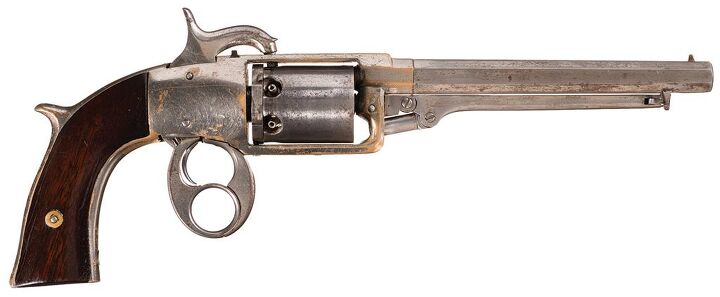
Savage & North Figure 8. Photo Credit: Rock Island Auctions
The use of a separate cocking lever is somewhat similar to the system used in the Tranter-Kerr. However, one cannot pull both the lever and the trigger of the Savage & North at the same time to fire “double-action” like the Tranter; it would likely damage the mechanism.
The cylinder had a spring in a front recess that would provide the spring pressure for the lever, pushing the cylinder back when the cocking lever was pulled rearward. When the lever came back forward, the cylinder would push forward against the barrel, providing a safety seal against burning powder fragments when fired. The percussion cap nipples were also oriented in a perpendicular, rather than parallel, fashion to the cylinder.
The Figure 8 also had fixed front and rear sights as well as a solid frame. The Figure 8 was accepted for trials by the US Army, which bought about 100 pieces for cavalry use in the late 1850s.
The Savage Navy
By 1861, Savage & North had reformed into the Savage Revolving Firearms Company (no relation to today’s Savage Arms). An improved model of the Figure 8, the Savage Navy, was submitted to the US military and eventually saw combat use on both sides of the US Civil War.
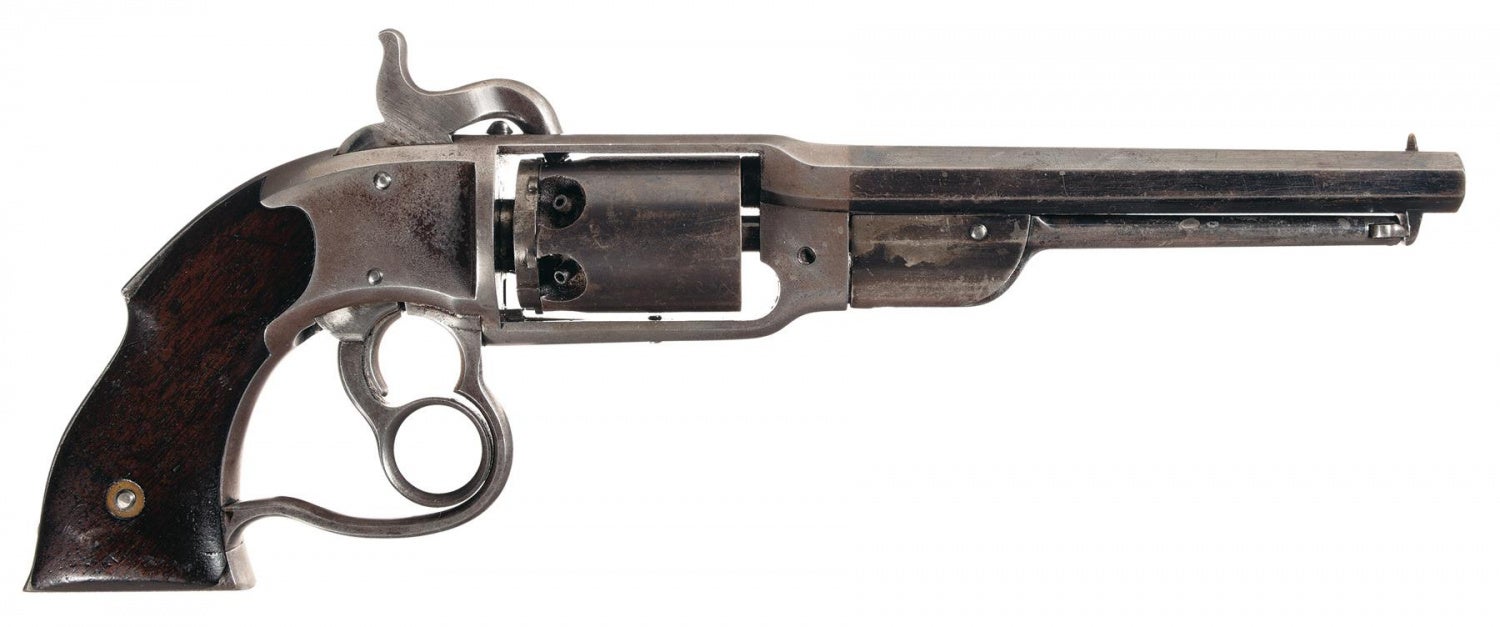
Savage Navy. Photo Credit: Rock Island Auctions
Still chambered in .36, the Savage Navy has a very unusual grip configuration for a revolver, with a full handguard instead of just a trigger guard. The brass spur of the Figure 8’s grip was replaced on the Savage Navy with a simplified contour in the wooden grip that would still prevent the revolver from rotating in one’s hand during recoil. Recoil was also lessened due to this revolver weighing over 3lbs.
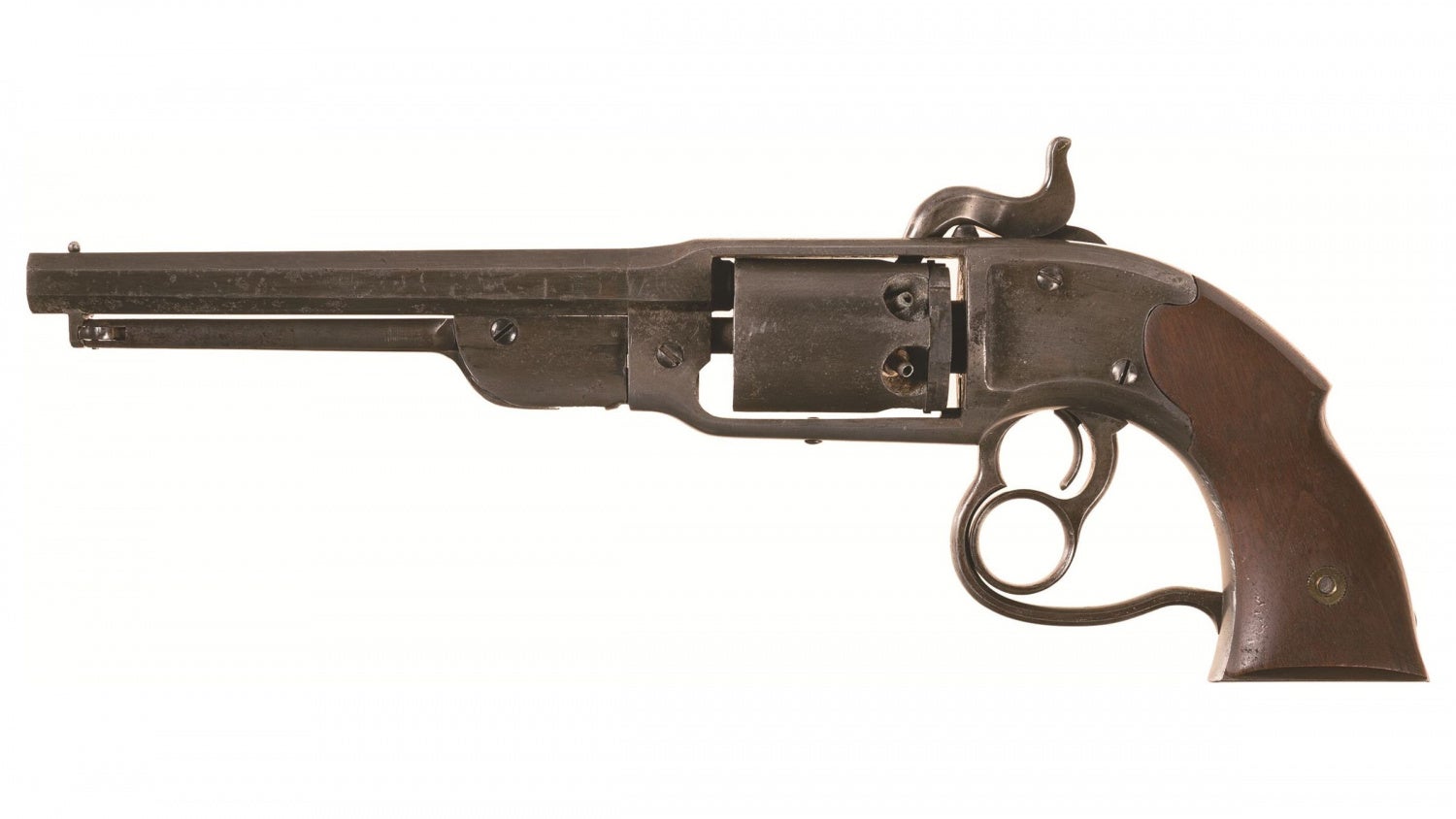
Savage Navy. Photo Credit: Rock Island Auctions
The Savage Navy was actually used more prevalently by the US Army, which ordered roughly 13,000 pieces for use in the US Civil War, compared to the US Navy which only ordered around 800. 11,000 pieces were produced for commercial sales, many of which made it into the hands of Confederate Cavalry units. The Savage Navy was not prohibitively expensive for the time, but did cost almost twice as much as Civil-war era competitors, at around $20 a piece. Surviving examples go for quite a bit these days, however.
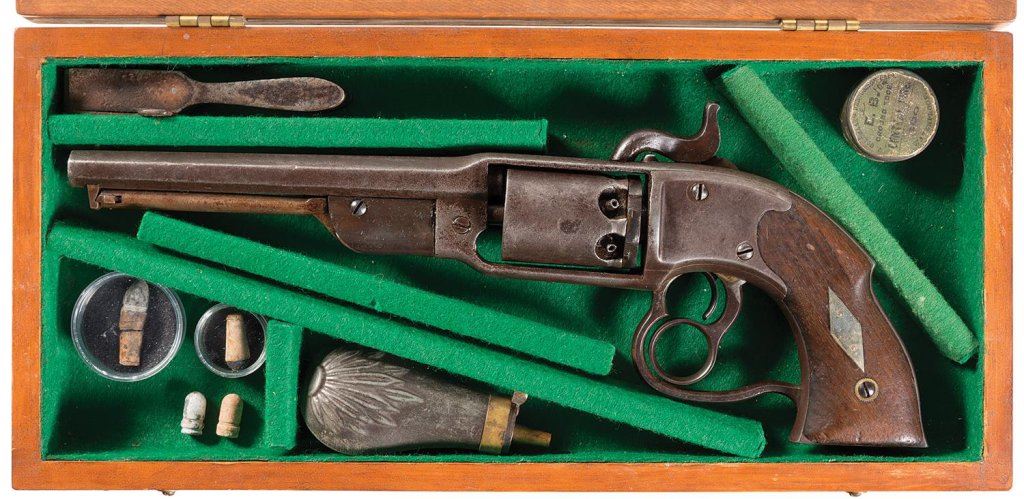
Savage Figure 8 with accessories. Photo Credit: iCollector Auctions
 Your Privacy Choices
Your Privacy Choices
